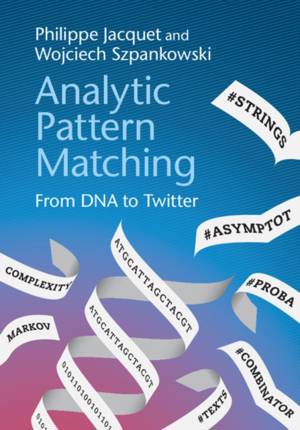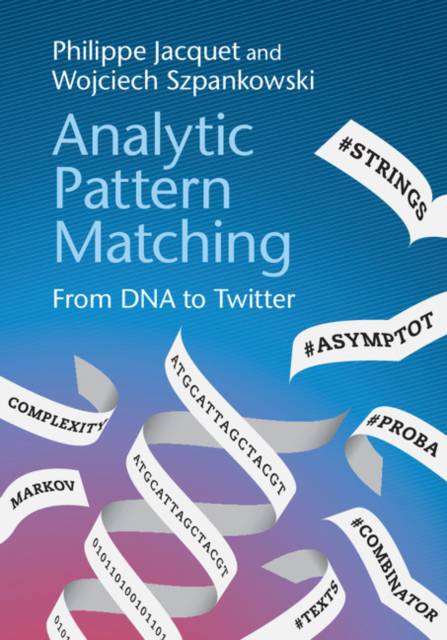
- Afhalen na 1 uur in een winkel met voorraad
- Gratis thuislevering in België vanaf € 30
- Ruim aanbod met 7 miljoen producten
- Afhalen na 1 uur in een winkel met voorraad
- Gratis thuislevering in België vanaf € 30
- Ruim aanbod met 7 miljoen producten
Zoeken
Analytic Pattern Matching
From DNA to Twitter
Philippe Jacquet, Wojciech Szpankowski
Hardcover | Engels
€ 89,45
+ 178 punten
Omschrijving
How do you distinguish a cat from a dog by their DNA? Did Shakespeare really write all of his plays? Pattern matching techniques can offer answers to these questions and to many others, from molecular biology, to telecommunications, to classifying Twitter content. This book for researchers and graduate students demonstrates the probabilistic approach to pattern matching, which predicts the performance of pattern matching algorithms with very high precision using analytic combinatorics and analytic information theory. Part I compiles known results of pattern matching problems via analytic methods. Part II focuses on applications to various data structures on words, such as digital trees, suffix trees, string complexity and string-based data compression. The authors use results and techniques from Part I and also introduce new methodology such as the Mellin transform and analytic depoissonization. More than 100 end-of-chapter problems help the reader to make the link between theory and practice.
Specificaties
Betrokkenen
- Auteur(s):
- Uitgeverij:
Inhoud
- Aantal bladzijden:
- 385
- Taal:
- Engels
Eigenschappen
- Productcode (EAN):
- 9780521876087
- Verschijningsdatum:
- 30/06/2015
- Uitvoering:
- Hardcover
- Formaat:
- Genaaid
- Afmetingen:
- 173 mm x 249 mm
- Gewicht:
- 816 g

Alleen bij Standaard Boekhandel
+ 178 punten op je klantenkaart van Standaard Boekhandel
Beoordelingen
We publiceren alleen reviews die voldoen aan de voorwaarden voor reviews. Bekijk onze voorwaarden voor reviews.








